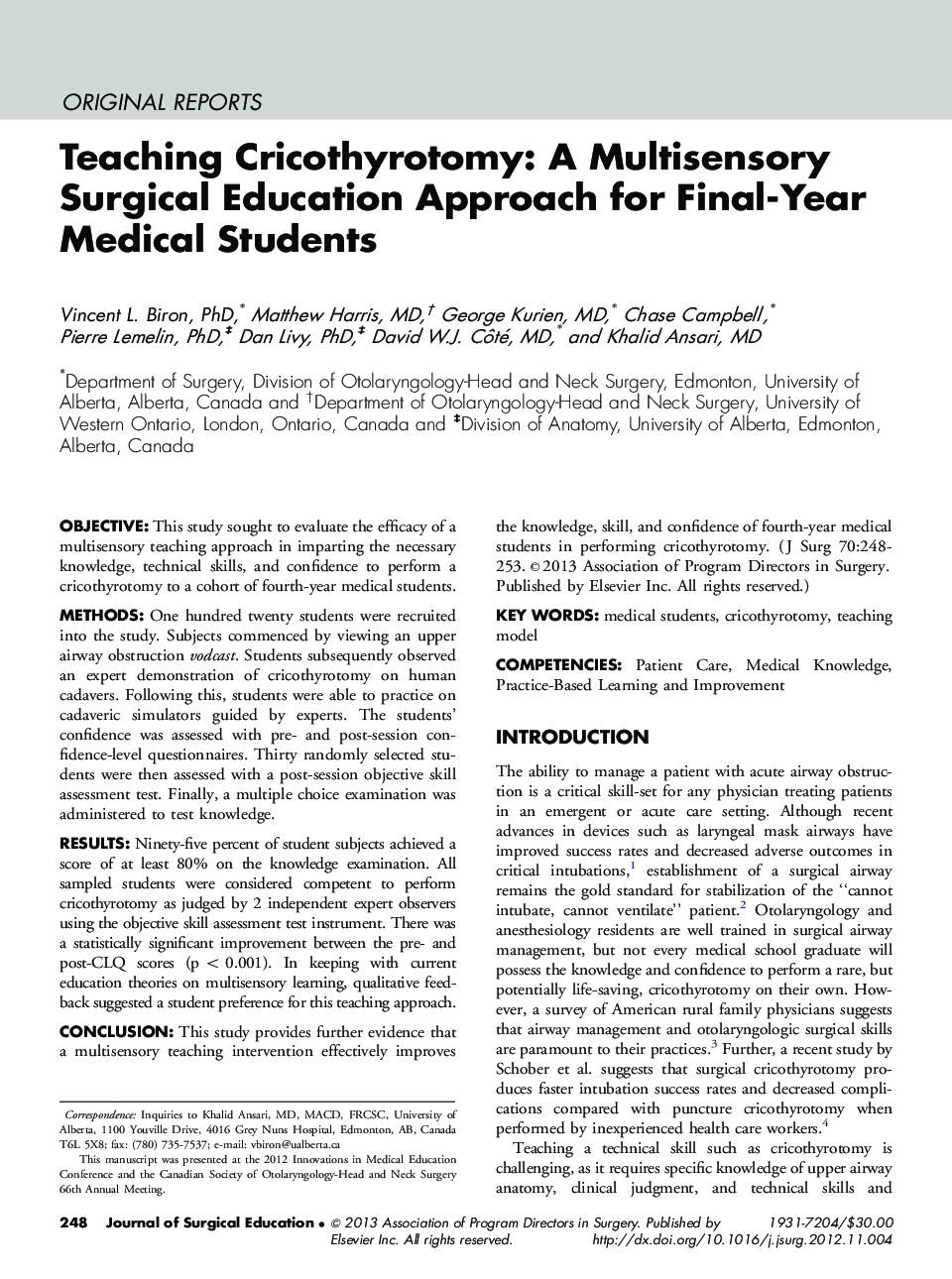| Article ID | Journal | Published Year | Pages | File Type |
|---|---|---|---|---|
| 4298149 | Journal of Surgical Education | 2013 | 6 Pages |
ObjectiveThis study sought to evaluate the efficacy of a multisensory teaching approach in imparting the necessary knowledge, technical skills, and confidence to perform a cricothyrotomy to a cohort of fourth-year medical students.MethodsOne hundred twenty students were recruited into the study. Subjects commenced by viewing an upper airway obstruction vodcast. Students subsequently observed an expert demonstration of cricothyrotomy on human cadavers. Following this, students were able to practice on cadaveric simulators guided by experts. The students' confidence was assessed with pre- and post-session confidence-level questionnaires. Thirty randomly selected students were then assessed with a post-session objective skill assessment test. Finally, a multiple choice examination was administered to test knowledge.ResultsNinety-five percent of student subjects achieved a score of at least 80% on the knowledge examination. All sampled students were considered competent to perform cricothyrotomy as judged by 2independent expert observers using the objective skill assessment test instrument. There was a statistically significant improvement between the pre- and post-CLQ scores (p<0.001). In keeping with current education theories on multisensory learning, qualitative feedback suggested a student preference for this teaching approach.ConclusionThis study provides further evidence that a multisensory teaching intervention effectively improves the knowledge, skill, and confidence of fourth-year medical students in performing cricothyrotomy.
